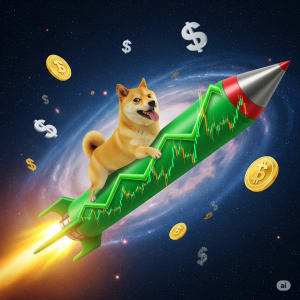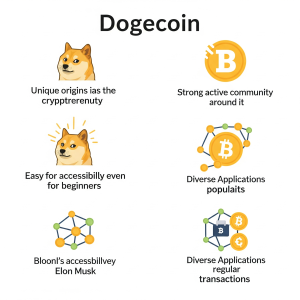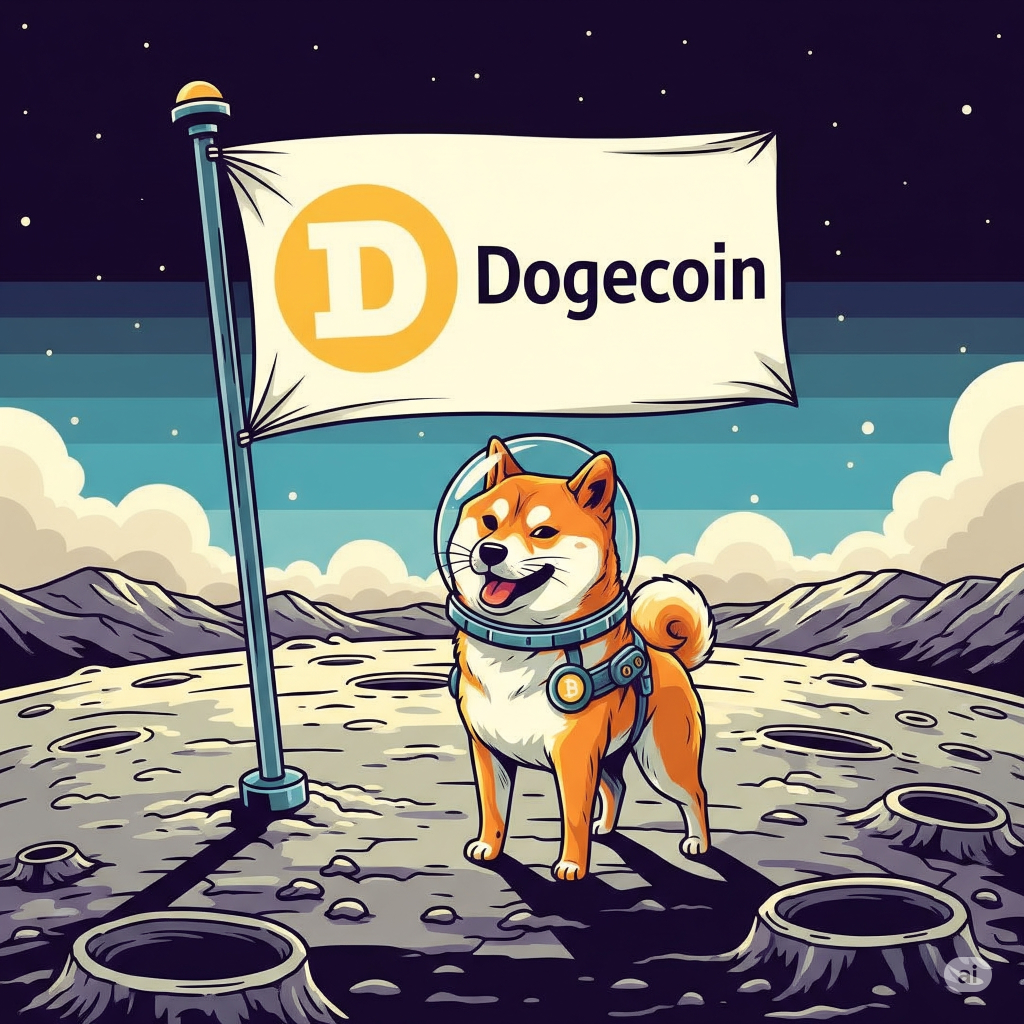Dogecoin’s recent surge isn’t just a flash in the pan. It’s a complex mix of internet culture, decentralized finance, and unexpected market moves. What started as a satire of cryptocurrencies now draws in millions of fans and high-profile endorsements. Retail investors love the thrill of its volatility, and even major brands are jumping on board. This in-depth article explores why Dogecoin is becoming more popular than ever, from viral memes to market-shaking celebrity tweets.
The Origins and Evolution of Dogecoin

The Birth of a Meme Coin
Dogecoin (DOGE) was created in December 2013 by programmers Billy Markus and Jackson Palmer. Markus, an IBM software engineer, and Palmer, an Adobe product manager, conceived the project as a fun and friendly alternative to Bitcoin, the pioneering and more serious cryptocurrency. The idea was to create a digital currency that could reach a broader audience, free from the controversial aura that surrounded Bitcoin at the time. The inspiration for the name and logo came from the popular “Doge” meme, which features a Shiba Inu dog with funny expressions and grammatically incorrect captions. Instead of focusing on complex technical jargon, Dogecoin centered on fun and the power of community. Its initial purpose was not to revolutionize the financial world, but to entertain and create an online tipping ecosystem.
From Meme to Market Player
At first, Dogecoin was seen predominantly as an internet joke. However, its potential quickly garnered attention. Early adopters began using the coin to tip content creators on platforms like Reddit and for small donations. Over time, cryptocurrency exchanges started listing DOGE, increasing its liquidity and accessibility. Community-led campaigns raised funds for notable charitable causes and projects, such as sponsoring the Jamaican bobsled team for the 2014 Winter Olympics and funding a project to bring clean water to a region in Kenya. Its value, once a punchline, began to solidify, transforming it into a legitimate digital currency with real use cases and a market cap that would eventually reach billions of dollars.
Key Participants in Its Growth
The Dogecoin community has been the fundamental pillar of its growth. Loyal and engaged fans, who call themselves “Shibes,” are relentless in promoting the coin and organizing initiatives. Early enthusiasts kept the flame alive by sharing memes and fostering a welcoming atmosphere. Over time, digital influencers and social media advocates created waves of interest, pushing Dogecoin into the mainstream and attracting a new generation of investors and users.
Factors Driving the Popularity of Dogecoin

Social Media and Viral Marketing
Memes, short videos, and trending hashtags have turned Dogecoin into a social media phenomenon. Platforms like Twitter, TikTok, and Reddit are the fertile ground where Dogecoin culture thrives. The ease of sharing funny content and quick updates about the coin allows interest to spread exponentially. When a DOGE-related viral trend catches on, it triggers a chain reaction of engagement, curiosity, and, often, new investment.
Celebrity Endorsements and High-Profile Tweets
The influence of Elon Musk, the CEO of Tesla and SpaceX, is undeniably one of the biggest catalysts for Dogecoin’s popularity. His tweets, ranging from direct mentions to jokes and memes about “Doge,” frequently cause massive spikes in the coin’s price. Other celebrities, such as rapper Snoop Dogg and billionaire entrepreneur Mark Cuban, have also added fuel to this fire. Cuban, owner of the Dallas Mavericks basketball team, not only endorsed the coin but also began accepting it as payment for tickets and merchandise. When public figures of this magnitude talk about Dogecoin, the world pays attention.
Community and Culture
Dogecoin fans are known for their passion and sense of unity. They organize charity events, crowdfunding campaigns, and maintain a vibrant online presence. The community’s motto, “Do Only Good Everyday,” reflects its collaborative spirit. This sense of belonging makes Dogecoin more than just a digital asset—it’s a community project, a cultural movement that people identify with.
Market Dynamics and Accessibility
The increasing listing of Dogecoin on major global exchanges like Coinbase and Binance has made buying and selling the coin extremely simple for the general public. Furthermore, its historically low transaction costs and faster block confirmations compared to Bitcoin make it attractive for everyday users looking to make small transactions. The simplicity of buying, sending, and using DOGE positions it as a favorite in the crowded crypto space.
Real-World Applications and Use Cases

Adoption by Businesses and Merchants
A growing number of businesses are starting to accept Dogecoin as a form of payment. From small online shops to large corporations, acceptance is expanding. AMC Theatres, the world’s largest cinema chain, and Newegg, a major electronics retailer, are examples of companies that have integrated DOGE into their payment systems. This shift signals a potential future where Dogecoin could be used as a regular currency in daily life.
Charitable and Fundraising Initiatives
The generosity of the Dogecoin community shines through its fundraising efforts. Projects like “Doge4Water,” which raised over $30,000 to provide clean water in Kenya, and the sponsorship of NASCAR driver Josh Wise, showcase the coin’s potential to mobilize people for good causes. These acts demonstrate its ability to generate a positive and tangible impact in the real world.
Investment and Trading Trends
Many retail investors see Dogecoin as an opportunity for quick profit due to its high volatility. Its sharp spikes and dips make it attractive for day trading. Market data shows rising trading volumes, pushing Dogecoin to the top of the digital currency rankings by market capitalization and solidifying its position as a relevant, albeit speculative, financial asset.
Expert Opinions and Industry Analysis

Cryptocurrency Experts’ Views
Experienced analysts view Dogecoin as a unique, meme-driven asset. They believe its strong community and cultural appeal give it remarkable resilience. However, the consensus is that it is a high-risk investment. The primary warning is about its extreme volatility, which can lead to significant financial losses as quickly as it can lead to gains.
Risks and Challenges
Volatility remains the biggest concern. Since its price is heavily influenced by hype and memes, it can plummet rapidly based on shifts in social media sentiment. Rumors, fake news, and market manipulation by large holders (“whales”) also pose significant threats. It is crucial for investors to be cautious, conduct their own research, and understand the risks involved.
Predictions for the Future
Most industry insiders believe Dogecoin has staying power, provided it maintains the vibrant support of its community. However, some doubt it can replicate its historic price peaks without new growth catalysts or significant technological evolution. Many view it as a long-term meme and a gateway to the crypto world, but not necessarily a fundamentally sound investment for the distant future.
Actionable Tips for Potential Investors
- Evaluate Dogecoin’s Role in Your Portfolio: Consider it a small, high-risk part of a diversified investment portfolio.
- Use Trusted Exchanges: To buy and store Dogecoin securely, use well-established cryptocurrency exchange platforms with good security practices.
- Follow the Community: Track the Dogecoin community’s activities and trends on Reddit and Twitter to stay informed about market sentiment.
- Remember the Golden Rule: Never invest more than you can afford to lose. The speculative nature of Dogecoin demands prudence.
Frequently Asked Questions (FAQ) about Dogecoin
1. What is Dogecoin and how does it differ from Bitcoin?
Dogecoin (DOGE) is a cryptocurrency created in 2013 as a fun alternative to Bitcoin. While Bitcoin was designed to be a decentralized and scarce electronic cash system (with a cap of 21 million coins), Dogecoin was created to be abundant (with new coins continually being created) and approachable, focusing on tips and donations. Its main difference is cultural: Dogecoin is driven by memes and a strong community, whereas Bitcoin is viewed as “digital gold” and a store of value.
2. Is it safe to invest in Dogecoin?
Investing in Dogecoin, like any cryptocurrency, carries risks. Its volatility is extremely high, meaning its price can rise or fall dramatically in a short period. These movements are often driven by hype and celebrity endorsements rather than technical fundamentals. Therefore, it is considered a high-risk investment. It is crucial to use secure exchanges and never invest more than you are willing to lose.
3. How does Elon Musk influence the price of Dogecoin?
Elon Musk has a significant influence on the price of Dogecoin through his posts on Twitter. When he mentions DOGE, whether positively or in a joking manner, it often leads to a surge in interest and demand, causing the price to spike. This phenomenon is known as the “Musk Effect.” His large follower base and reputation as a tech innovator give his words enormous weight in the cryptocurrency market.
4. Where can I buy Dogecoin?
You can buy Dogecoin on most major cryptocurrency exchanges. Some of the most popular platforms that list DOGE include Coinbase, Binance, Kraken, Gemini, and Robinhood. The process generally involves creating an account, verifying your identity, depositing funds (like USD or EUR), and then exchanging those funds for Dogecoin.
5. Does Dogecoin have any real-world use?
Yes. Although it started as a joke, Dogecoin has gained real-world utility. It is used for tipping online content creators and for donations to charitable causes. Additionally, a growing number of merchants, including major companies like AMC Theatres and the Dallas Mavericks, accept Dogecoin as payment for their products and services.


